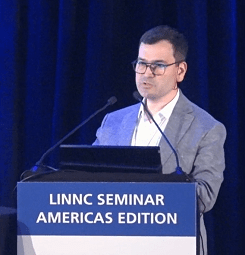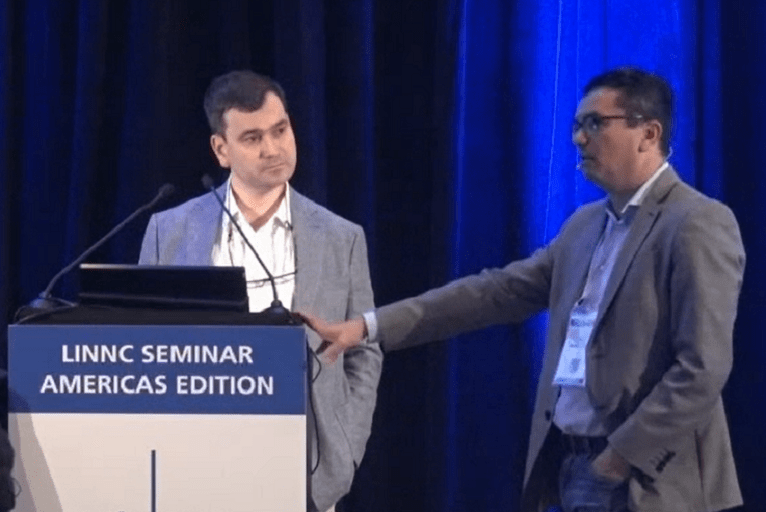
A unique case presentation at this year’s LINNC Americas Seminar (16–17 March, Miami, USA) saw Rafael de Oliveira Sillero (University of Texas Southwestern Medical Center, Dallas, USA) outline how he treated a child with ischaemic stroke at his centre, drawing a consensus from attendees that ‘aspiration first’ is the optimal mechanical thrombectomy approach in such scenarios.
The case De Oliveira Sillero delivered was that of an otherwise healthy two-year-old girl who awoke from a nap aphasic and unable to move her right side. He noted that a physical examination found the patient to be wide awake, but unable to follow commands and with a National Institutes of Health stroke scale (NIHSS) score of 14, when she arrived at the intensive care unit (ICU).
“In general, the decision-making process in children is really complicated for a couple of reasons,” De Oliveira Sillero informed the LINNC Americas audience. “First question: is thrombectomy even indicated, because of the young age—only two years old? As we all know, these children have very good collaterals. Secondly, is the door open for thrombectomy? We saw that the left carotid [artery] was occluded, or perhaps there was a bad dissection.”
The speaker reported that, ultimately, and in spite of a rare Texan snowstorm making travel to the hospital more challenging, they proceeded with a thrombectomy treatment. Ultrasound—the preferred approach in all paediatric cases at De Oliveira Sillero’s centre—was deployed, and an aspiration-first approach using the Sofia 5Fr catheter (Microvention) was selected.
Through this approach, De Oliveira Sillero and his colleagues were able to achieve first-pass total reperfusion of the occluded left cervical segment of the common carotid artery, with no dissection. An M1 occlusion in the patient’s intracranial circulation was also treated successfully, with total recanalisation (thrombolysis in cerebral infarction [TICI] 3) being achieved at the second pass.
“Note that there is no spasm in the MCA [middle cerebral artery], which is [one of] the benefits of using aspiration,” he added, presenting postoperative imaging from the case. “And, going back to discussions about the anatomy, I think this is really important in the decision-making process.”
De Oliveira Sillero further noted that, had an M2 occlusion been found on imaging, thrombectomy would not have been the recommended approach in this instance.
He went on to report that the patient demonstrated positive outcomes on follow-up magnetic resonance imaging (MRI) and, following rehabilitation, was doing “really well” at one month post-treatment, with “only a mild left-hand weakness”.
Highlighting a couple of discussion points raised by this case, De Oliveira Sillero noted that “we all love the transradial approach these days—but not for children”, adding that “there is no true reason to do it in a paediatric case”. He also referred to a 2019 paper in the Journal of Neurosurgery: Pediatrics detailing a total of 16 thrombectomy cases in young children (<5 years), half of which involved MCA occlusions, with the majority favouring a stent retriever-first technique and only one aspiration-first approach being recorded.
Despite this, the speaker reiterated that he favours aspiration in paediatric stroke cases—a point that LINNC course director Vitor Mendes Pereira (St Michael’s Hospital, Toronto, Canada) voiced support for, citing his own experiences of stent retrievers leading to vessel spasm in these patients.
Johanna Fifi (Mount Sinai Health System, New York, USA) also corroborated this view, stating that she employs a “very similar” aspiration-first approach in her practice. She also noted that a ‘radial-type’ sheath with a smaller outer diameter can be deployed when accessing the femoral artery, enabling a 6Fr sheath to be advanced to the cervical vessels in these younger patients.














